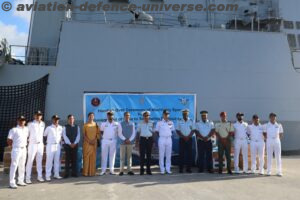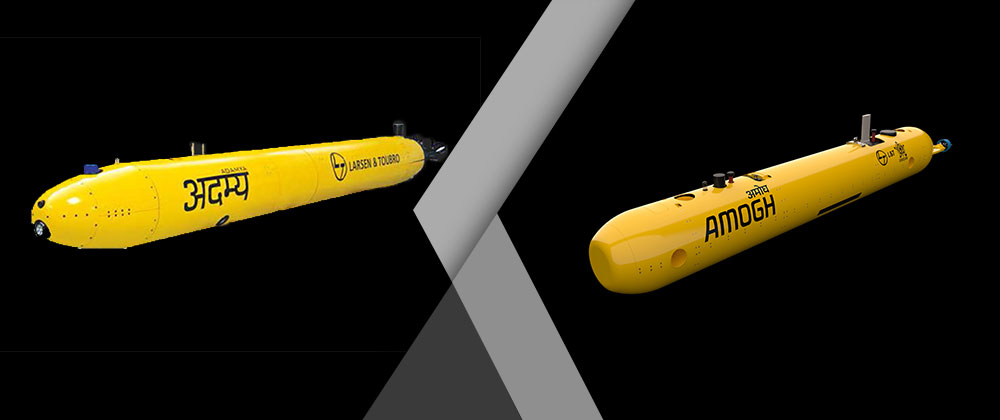
By Commodore Anil Jai Singh

New Delhi. 03 December 2021. At the recently held Naval Commanders Conference , the Defence Minister Rajnath Singh released the Indian Navy’s ‘Unmanned Roadmap’. This highlighted the increasing importance of unmanned technologies and platforms in naval, or for that matter, military operations of the future and the necessity to accord it due priority and a focused approach on the way ahead with distinct milestones to achieve the desired capability. The march of technology, the exponential growth in the power of computing and the advent of disruptive technologies is reshaping the world in more ways than one and its impact is being felt in the maritime security domain as well. The maritime space and in particular the underwater dimension still remains relatively opaque and uncharted, literally and metaphorically. The recent collision of the US Navy’s most advanced Seawolf class nuclear attack submarine, USS Connecticut with an uncharted seamount in the congested waters of the South China sea highlights this aspect. There is of course speculation that it may have been something else which indirectly suggests that it could have been an unmanned underwater vehicle which further emphasizes the point.
The effort and spending on developing unmanned systems with path-breaking technologies for enhancing maritime security represents a paradigm shift in the undersea warfare domain akin to the emergence of the submarine over a century ago and nuclear power after the Second World War.
The simplest explanation for the adoption of unmanned technologies by the military is to deliver effect while minimising the risk to life by keeping the human out of the loop to the extent possible. This laudable intent notwithstanding, there is much more to these technologies as effective force multipliers in shaping favourable outcomes in the maritime battlespace.
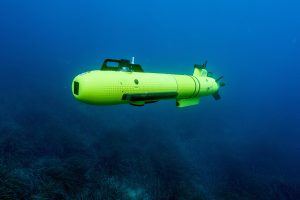
Till perhaps the last part of the previous century, it was the military that largely drove technology and innovation particularly in the underwater domain. The two world wars accelerated the pace of technological innovation with the advent of the radar, sonar and the snorkel, amongst many others. This was followed by the successful harnessing of nuclear power in the four decade long Cold war that followed. The origin of the all- pervasive internet without which we cannot imagine our lives today, also had its origins in military applications. However, in the last couple of decades or so, the roles have got reversed. It is civilian applications that are now driving technology which are then being adapted for military use. The unmanned underwater domain is one such. UUVs have been in the market since the 1980s. They have been used for laying, inspecting and repairing of submarine cables, oil and gas exploration, ocean research, seabed mapping and various other applications. Their use in the military domain is relatively recent and their huge potential is witnessing an exponential surge in research and development of technologies and platforms for multiple uses.
Awareness of the underwater domain is going to be a critical requirement from an economic and security perspective as man turns increasingly to sea and what lies beneath its surface for sustenance on earth. The emphasis in recent years on the Blue Economy as a sustainable development model for the future of humankind will drive research and development to understand the nature of the sea and the means to exploit it. This will give rise to security concerns as nations will increasingly compete, contest and may even confront each other in their attempt to secure these resources for their own benefit. China’s is the classic example. Its territorial claims in the South China Sea, its Grey Zone tactics in disputed waters, its belligerence in the East China Sea and its expanding footprint in the Indian Ocean are a strategic initiative aimed at wresting the economic advantage from the sea. The Chinese presence in the Indian Ocean is a cause for concern, be it a naval presence or its research vessels undertaking so called ‘scientific’ research below the surface with underwater gliders and drones. The discovery of a Chinese submarine glider off Indonesian waters in 2020 clearly exposed their intentions. This is a concern that has been flagged by successive Indian Naval Chiefs over the last few years and must be paid heed to. It is imperative for India to develop a suitable counter strategy and capability to blunt this edge.
The previous Chief of the Naval Staff Admiral Karambir Singh, at his annual press conference in Dec 2020 had identified Underwater Domain Awareness as a key priority area for the Indian Navy. He reiterated this at a Navy-industry seminar organised in Delhi in July this year and was further emphasised with the recent release of the Roadmap.
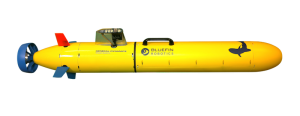
This document should provide clarity on the future development and deployment of unmanned technologies in the underwater domain over the next 15 years or so. This is a classified document and hence is not available in the open domain. However, the Navy is preparing an unclassified version to share the how, what, why and when with the scientific and R&D community, academia, industry and other stakeholders. It will provide them a fairly good idea of the intended way ahead and enable them to focus on core and niche technologies required to meet the country’s future requirements.
Unmanned technologies in the air have been deployed by the Indian Navy for almost two decades but its application in the underwater domain is still very rudimentary.
The development of Unmanned Underwater Vehicles which include both Autonomous and Remotely Operated platforms is progressing rapidly across the world as navies have begun deploying them for a range of tasks requiring them to be designed and developed in all shapes and sizes. Most of the leading global defence manufacturers are offering platforms with the flexibility to be configured for various payloads depending on the mission as well as those designed for specific tasks and missions.
Unmanned underwater vehicles (UUVs) offer navies flexibility, advanced technology, lower implementation and operational costs and improved operational time and safety. Amongst the many security related tasks that UUVs are being configured for, the salient ones are
- Mine Warfare
- Critical Infrastructure protection
- Choke point monitoring.
- Anti-Submarine and Anti-Surface warfare
- Intelligence, Surveillance and Reconnaissance
- Search and Rescue
- Harbour and Coastal surveillance
- Oceanographic research and bathymetric data collection and processing
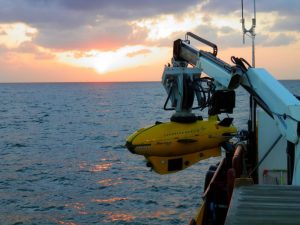
Not surprisingly, the USA and China are the two countries investing significantly in developing autonomous and unmanned platforms. In 2020, the Pentagon had asked for a 10 fold increase in funding. Boeing is building four Orca XLUUVs based on their Echo Voyager diesel-electric submersible. The 51-foot Orca has a range of 6500 nautical miles and is being configured to perform several combat missions, including anti-submarine and anti-surface warfare.
The USA has placed its faith in AI and has been very active in autonomous, AI-driven platform development and deployment ; It is developing actionable solutions from the plethora of data available including appropriate counter-measures by recognizing the adversary’s capabilities.
Chinese scientists are also focusing on AI and have promised to deliver AI-driven unmanned submarines to handle surveillance, mine laying, and attack missions by the end of this year and a XLUUV within a year. In its effort to reduce the US dominance in the Indo-Pacific it is also talking of developing an AI-enabled well equipped underwater base with autonomous submarines.
Mine warfare is another area where AI submersibles represent a major technological advance. A group of autonomous UUVs to conduct the complex operations needed to survey and clear an underwater mine field and expendable ROVs as hard kill solutions to neutralize mines are two applications that are now proven.
Modularity and flexibility are the key to UUV operations. Successful UUVs should be modular, cost effective, versatile and easily reconfigurable for multi-mission deployments. Despite the hype created of unmanned futurisitic navies , UUVs will have to operate in conjunction with manned platforms for the foreseeable future. Once these begin to be widely used, they will require an organizational and operational structure manned by specialists who could evolve operational procedures, tactics and integration with the existing assets. Modern navies like the US Navy and the Royal Navy have established such organisations to develop their operational concepts by simulating their emerging unmanned capabilities in various scenarios. Multilateral military alliances like NATO and the Five Eyes network are also testing autonomous capabilities in exercises like Unmanned Warrior to adapt capabilities to future operational requirements and validate operational and tactical concepts including a seamless integration into their wider tactical and operational security architecture.
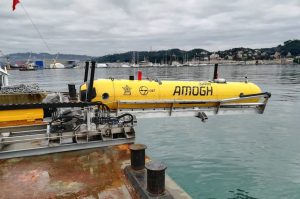
Modern technology will be the principal driver of UUV development. 3D printing which has found widespread usage in the aerospace industry is now being applied to UUV design and manufacture.
The heart of a UUV is its central processor which provides integration of various system technologies on board like autonomous navigation, collision avoidance solutions, control and communications, high-definition cameras, and other sensors. Processing and analysing this high volume of data will require data analytics technologies and other AI applications to get the desired results. As a consequence pioneering research in artificial intelligence (AI) underwater communications, autonomous navigation, and unmanned swarm technologies is being driven by the military applications of UUVs. Swarming technology with networked unmanned assets is getting close attention and is an effective means of surveillance, protecting high value assets, minesweeping etc and for also delivering kinetic effect from underwater.
Underwater navigation and communication remains a challenge. Traditional technologies are proving less than effective because of inherent limitation with the medium. This is leading to extensive research in Quantum sensors for navigation and communication as these can be effectively used for improving the accuracy with inertial navigation, detection and collision avoidance. Similarly, Quantum communications are relatively safer and can be used for to communicate securely with submerged objects such as submarines and UUVs.
However, limitations remain. Surprisingly achieving interoperability is currently impossible due to the lack of common standards and protocols for wireless communication. Different manufacturers have different standards, Efforts with industry are in progress to develop common communications standards and encourage development of software-defined modems and networks for UUVs and UUV control systems.
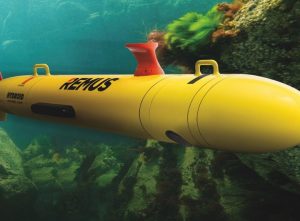
There is also some concern at the possible ethical and political challenges in autonomous operations related to the means being used to achieve the ends. Establishing ethical guidelines may be feasible but ensuring that all countries adhere to them cannot be either forced or confirmed. From fundamental issues like discriminating between friendly and unfriendly targets in a congested battlespace to issues of limiting the endless possibilities of AI on unleashing deadly force are points that merit concern.
Water space management is another challenge. The proliferation of vessels below the surface of the sea, whether manned or unmanned is set to increase rapidly. In the shallow and restricted waters of the Indo-Pacific littoral, this is going to e a challenge and there has been preliminary discussion on institutionalizing a water space management regulatory mechanism to prevent collisions and accidents underwater. However, with sovereign concerns on deployment of undersea assets and stealth and concealment being the integral requirement , there is little possibility of this happening.
UUVs are set to alter the nature of undersea warfare whether in detection, tracking or attacking undersea, surface, or land targets. Such missions will require new and advanced capabilities, from seamless, real-time communications among UUVs and manned platforms to advanced undersea navigation and real-time data transfer in a multi static networked battlespace. As this technology develops, the focus will be on manoeuvrability, endurance, size, multi-mission capability, weapons and sensors including towed array sonars.
In India , the R&D establishment, research institutions, the scientific community, academia and industry have been investing time and effort in developing autonomous underwater platforms. The forthcoming Def Expo 2022 in Gandhinagar early next year will showcase the current development and future potential of the indigenous effort.
In the emerging regional maritime security scenario, a robust UUV capability is a strategic imperative for India’s maritime security and economic well-being. Hopefully the Unmanned Roadmap will provide the way ahead and act as a catalyst for all stakeholders to synergise their efforts towards developing the ecosystem for building and operating these platforms.
The author Commodore AJ Singh is an ex-submariner of the Indian Navy and a defence expert. He is the Vice President at Indian Maritime Foundation. The views in the article are solely the author’s. He can be contacted at editor.adu@gmail.com







































